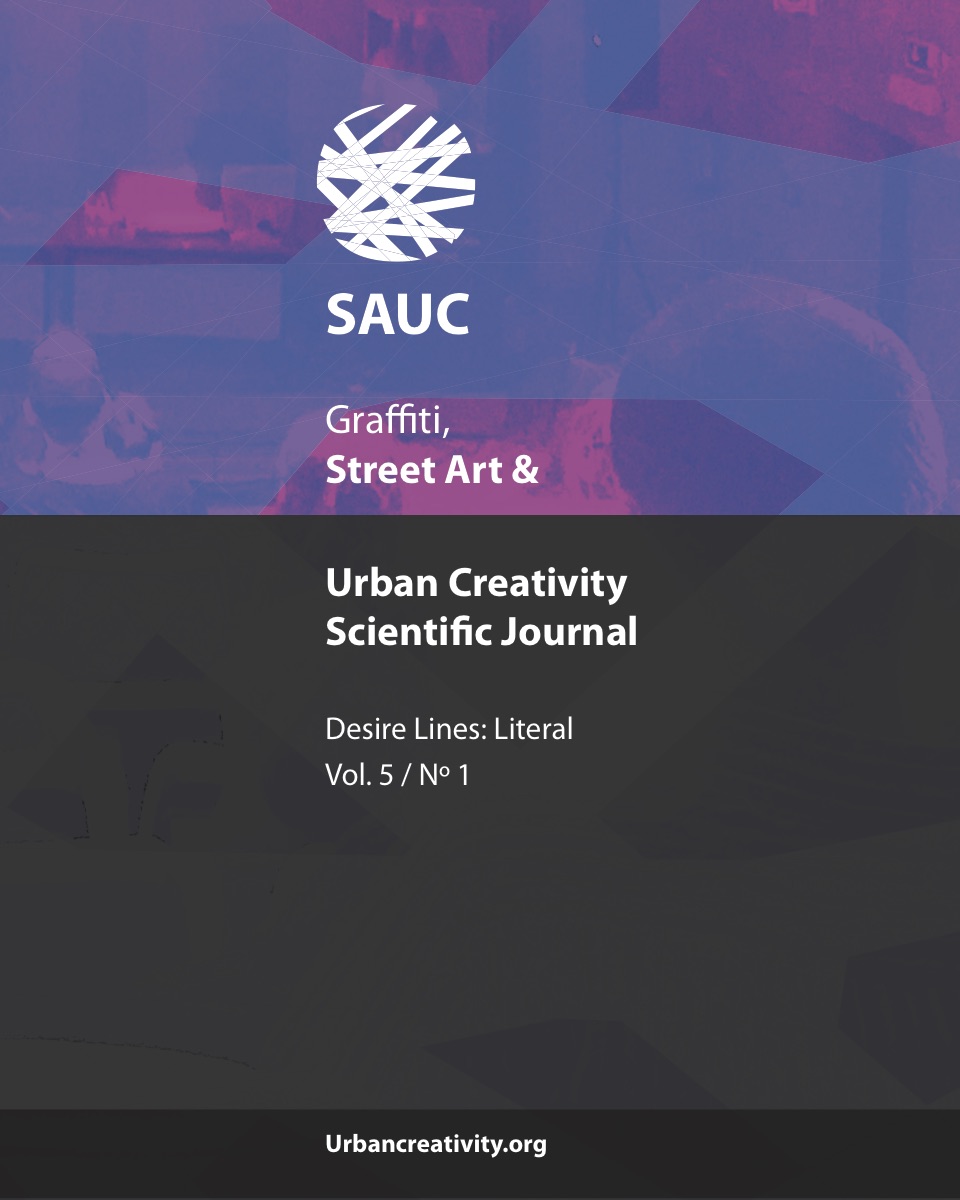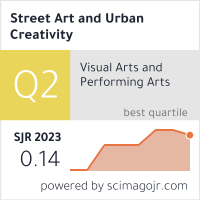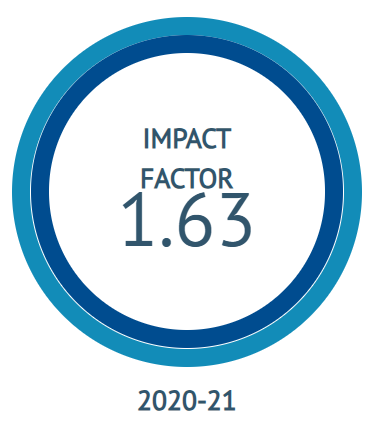Street art and heritage conservation: From values to performativity
DOI:
https://doi.org/10.25765/sauc.v5i1.181Palabras clave:
street art, urban space, heritage conservation, performativity, non-representational theory, performative methodsResumen
The present study re-evaluates the relationship between street art and the value-based approach to heritage conservation. The research presents the limitations of the value-based approach, which relate to its conceptualisation of stakeholders, experts and tangible preservation, as well as its distinction between present and past, and tangible and intangible heritage. In response, the paper suggests a performative approach to street art heritage conservation theory and practice. First, the paper introduces the notion of performativity within non-representational theory and its temporary, affective and relational aspects. Drawing further on the performativity approach, street art and urban studies, the paper illustrates and argues that the aesthetic experience of street art does not distinguish between past and present or tangible and intangible; instead, the experience is relational, socio-spatial, temporary and affective. Finally, the research offers a performative methodology for practising relations between street art and heritage.
Descargas
Estadísticas globales ℹ️
|
198
Visualizaciones
|
71
Descargas
|
|
269
Total
|
|
Descargas
Publicado
Cómo citar
Número
Sección
Licencia
Los autores/as que publiquen en esta revista aceptan las siguientes condiciones:
- Los autores/as conservan los derechos de autor.
- Los autores/as ceden a la revista el derecho de la primera publicación. La revista también posee los derechos de edición.
- Todos los contenidos publicados se regulan mediante una Licencia Atribución/Reconocimiento-SinDerivados 4.0 Internacional. Acceda a la versión informativa y texto legal de la licencia. En virtud de ello, se permite a terceros utilizar lo publicado siempre que mencionen la autoría del trabajo y a la primera publicación en esta revista. Si transforma el material, no podrá distribuir el trabajo modificado.
- Los autores/as pueden realizar otros acuerdos contractuales independientes y adicionales para la distribución no exclusiva de la versión del artículo publicado en esta revista (p. ej., incluirlo en un repositorio institucional o publicarlo en un libro) siempre que indiquen claramente que el trabajo se publicó por primera vez en esta revista.
- Se permite y recomienda a los autores/as a publicar su trabajo en Internet (por ejemplo en páginas institucionales o personales), una vez publicado en la revista y citando a la misma ya que puede conducir a intercambios productivos y a una mayor y más rápida difusión del trabajo publicado (vea The Effect of Open Access).













